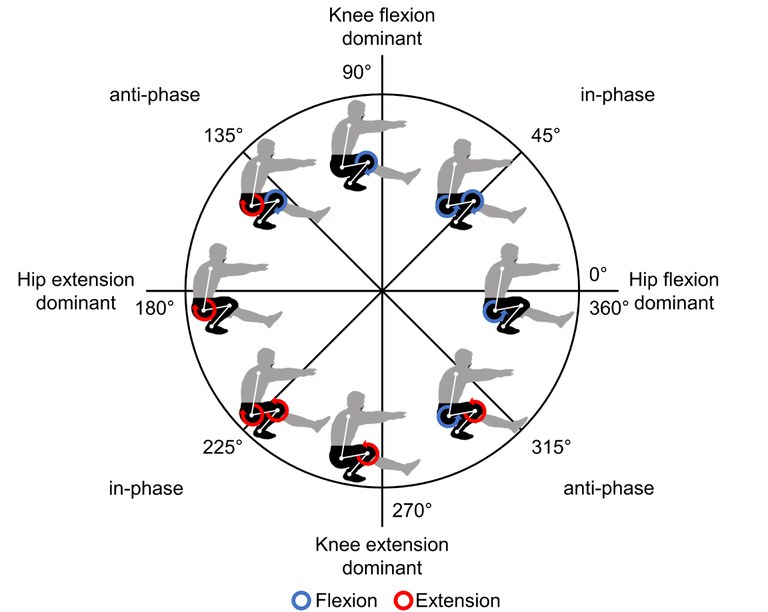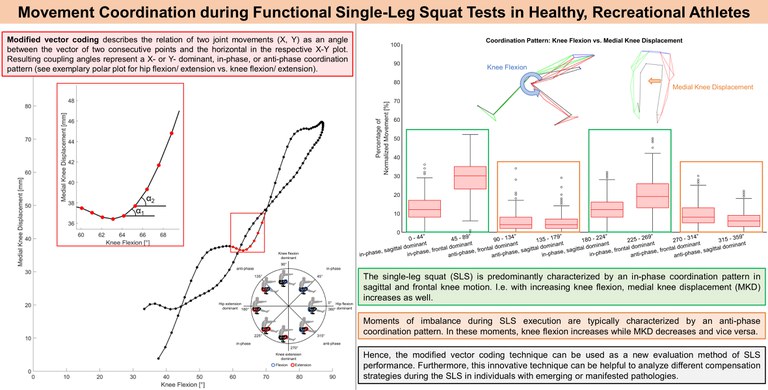
Movement Coordination during Functional Single-Leg Squat Tests in Healthy, Recreational Athletes
22 Februar 2022
In Zusammenarbeit mit der der Abteilung für Sportorthopädie des Klinikums München rechts der Isar, der TUM Professur für Biomechanik im Sport, dem Präventionszentrum der TUM Fakultät für Sport und Gesundheitswissenschaften untersuchte die Professur für Bewegungswissenschaften mit einem Schwerpunkt Digitalisierung der Universität der Bundeswehr München den Funktionstest „Single-Leg Squat“. Ziel der Untersuchung war es die Bewegungskoordination des Single-Leg Squats als Leistungsparameter objektiv zu beurteilen. Die Studienergebnisse wurden als wissenschaftlicher Beitrag im Fachjournal „Symmetry“ publiziert. Das Projekt wurde von der Deutschen Kniegesellschaft und dem FORscience Research Fund der Universität der Bundeswehr München gefördert.

Ksoll, K. S. H., Cotic, M., Schmalzl, K., Beitzel, K., Achtnich, A., Imhoff, A., Schwirtz, A., Kreuzpointner, F., & Seiberl, W. (2022). Movement Coordination during Functional Single-Leg Squat Tests in Healthy, Recreational Athletes. Symmetry, 14(2), 388.
Abstract: The single-leg squat (SLS) represents a functional movement task for determining leg function. Objective movement analysis is required to evaluate inter-limb symmetry and movement coordination. Therefore, this study aimed to investigate inter-limb symmetry of SLS kinematics and movement coordination using the modified vector coding technique. A 3D motion capture system and electromyography were used to assess SLS execution and muscle activation of hip ab- and adductors of 17 healthy, recreational athletes. Coordination patterns of hip, knee, and ankle joint movement were assessed by the modified vector coding technique. Statistical parametric mapping revealed no significant differences between both legs (p > 0.05). Inter-limb symmetry also appeared in movement coordination (p > 0.05). Additionally, the analysis of movement coordination indicates knee-dominant, in-phase coordination. However, coordination patterns were different between downward movement, change of direction, and upward movement (p < 0.001). Since perturbations during SLS execution, such as moments of imbalance, occur as anti-phase coordination patterns, the analysis of coordination patterns can be used as a new evaluation method for SLS performance. Furthermore, the modified vector coding technique might be helpful to analyze different compensation strategies during the SLS in symptomatic individuals.
https://doi.org/10.3390/sym14020388
Korbinian Ksoll, M.Sc.
E-Mail: korbinian.ksoll@unibw.de
https://www.unibw.de/hum-sportwissenschaft/sportpraxis/personen/korbinian-ksoll-m-sc





